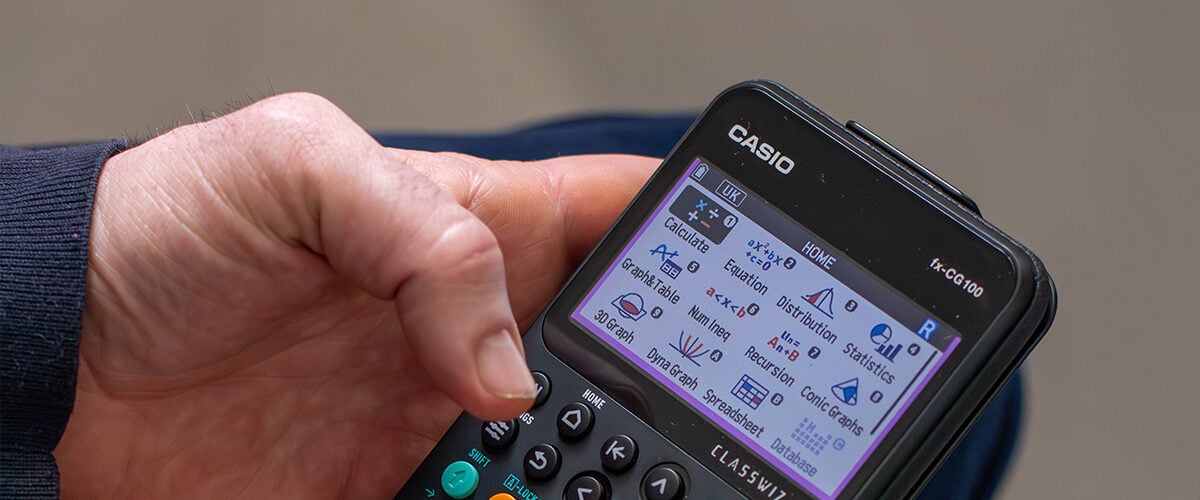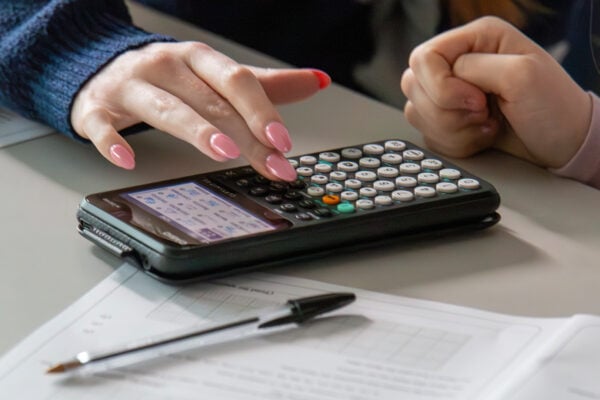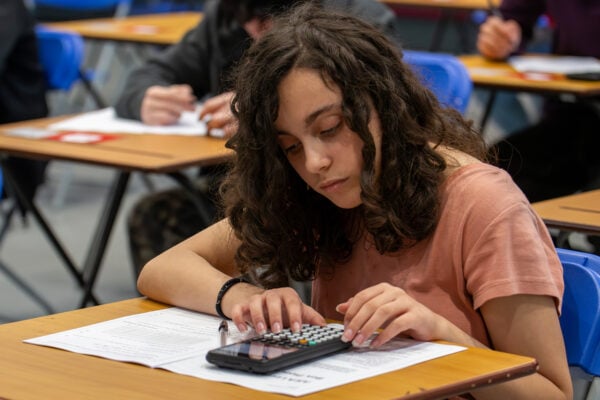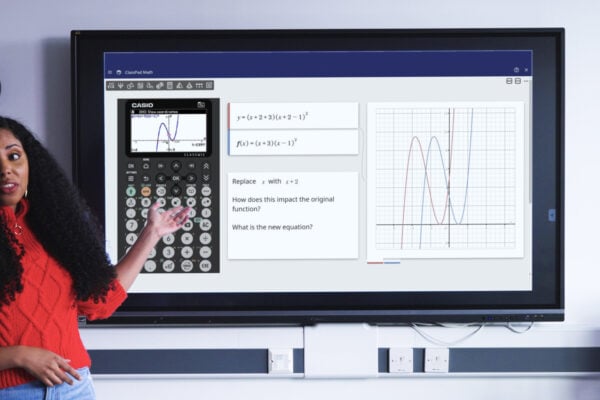Transitioning to the fx-CG100: a teacher’s view

The fx-CG100 graphic calculator is here, and as we’ve explored in previous blogs, it brings some exciting benefits and new features with it.
We understand that, from a teacher’s perspective, the introduction of a new tool can certainly be useful, but can also lead to questions about the ease of classroom adoption and the transition period.
To get a teacher’s eye view on this – and the fx-CG100 in general – we spoke to James Davis, Head of KS5 Further Mathematics at Newstead Wood School.
Making the move to the fx-CG100
James had already spent some time using the fx-CG100 and had introduced some of his students to the device.
Although, as it turned out, some members of his class were already aware of the new addition to the Casio calculator range.
“They came in the other week saying, ‘Sir, sir, have you seen there’s a new calculator out?’ So they were already quite excited about it,” James told us.
In terms of making the transition and starting to use the fx-CG100, the students generally picked it up well, and were pleased to see that – unlike the fx-CG50 – the new calculator has a dedicated app for calculating inequalities.
Those who had spent a lot of time using the fx-CG50 and were used to its quirks were quick to note the differences in the fx-CG100, but James said this is unlikely to be a major obstacle for students who are naturally comfortable with technology.
“Once you get used to using it, the fx-CG100 is essentially very similar to the fx-CG50,” he said. “All the same functionality is there, and it’s actually more intuitive and logical to use.
“The fx-CG100 looks prettier, it’s updateable – it’s just a nice device to use and it’s not difficult to learn, so I don’t anticipate any major problems in students getting used to it.”
Stepping up from a scientific calculator
One of the driving forces behind the design and creation of the fx-CG100 was our goal to create a colour graphic calculator that can sit comfortably in the ClassWiz range alongside our updated scientific handsets.
This enables a smoother transition between these technologies for students making the step up from GCSE to A-level maths.
Students who have experience with the fx-83/85GT CW and the fx-991CW will be familiar with features such as the Catalog key and the navigable menu structure, which are also central to how the fx-CG100 operates.
James said this consistency should make a big difference to students, and therefore to teachers trying to make the best use of their time in the classroom.
“In the past, students going from using a scientific calculator to the fx-CG50 have found it tricky, because it’s a very different machine,” he told us.
“The standardisation of the ClassWiz range with the fx-CG100 should definitely help with that. It’s not such a steep learning curve for students and it’s a very intuitive device to use.”
Logical ordering of apps and Exam Mode
A good example of the logical arrangement of the fx-CG100 is the calculator’s home screen, which has been designed to make the most frequently used modes easily available at the top.
When you press the Home key, you’ll see that the top row is dedicated to the Calculate, Equation, Distribution and Statistics apps, followed by the newly combined Graph & Table mode and the new Numeric Inequality app.
James was particularly pleased to see that Distribution has been given a prominent spot on the home screen.
“The placement of Distribution at the top of the home screen reflects how good that app is,” he said. “It was introduced as an add-on to the fx-CG50 a few years ago and has very quickly become a favourite of teachers and students alike.”
If you’ve previously used the fx-CG50, another change you’ll notice is how you activate UK Exam Mode on the fx-CG100.
Rather than having to execute a specific sequence of key presses, all you have to do is navigate to the dedicated Exam Mode app (shortcut K) to turn it on.
Why ClassPad is crucial
James also stressed how important it is that the fx-CG100 emulator is available on ClassPad, our web-based platform for teaching and learning maths.
UK and Ireland maths teachers can get free licences to access ClassPad and benefit from its various features – not just online calculator emulators, but other tools including sticky notes, graphing and shape-drawing tools.
James said the software is very close to being the perfect maths teacher’s notebook, and a big part of its appeal is ease of access.
“The emulator access through ClassPad is a really big one for me – and will be for a lot of teachers, I think – largely because it’s web-based,” he said.
“That means you don’t have to worry about having software installed on your network, which is becoming increasingly difficult in some schools.”
The power of graphing technology
As well as speaking about the fx-CG100, we took the opportunity to ask James for his thoughts on the benefits of graphic calculators in general, and he was very clear in his response.
“I’m firmly of the opinion that using a graphic calculator can effectively buy students an extra grade in A-level maths,” he said.
“The power of graphing technology in exams is not to be underestimated, because it allows students to constantly check their work, use graphs to visualise things and verify their answers, and just get that reassurance that they’re on the right track.”
What’s more, with ‘no smartphone’ policies becoming more common in schools, maths students will need to be confident with devices they can use both in the classroom and in their exams.
To find out more about our newest graphic calculator, head to the fx-CG100 homepage, where you’ll find links to webinars, ‘how-to’ videos, FAQs and more.



